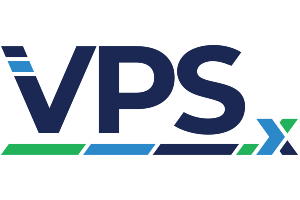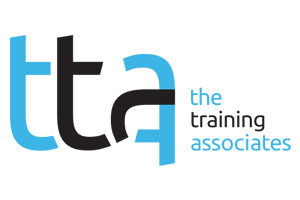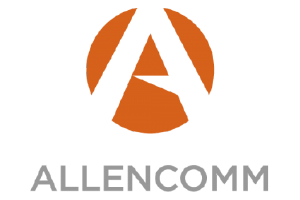Job architecture is essentially the framework of roles, levels and career paths within an organization. When business strategies shift, say due to high growth, digital transformation, new markets or leaner operating models, job architecture needs to keep up. If roles and career paths stay static while the company’s direction changes, you get misalignment. The result? Confusion, stagnant growth opportunities, and talent either stuck in place or walking out the door. As Deloitte experts note, “effective job architecture reflects future talent needs and supports the organization’s business strategies,” serving as a foundation for workforce planning and internal equity. In other words, evolving your job architecture is the strategic move to ensure your people’s roles keep pace with where the business is headed.
This is a lesson I learned firsthand in my own leadership journey. At one point, our company’s job roles and titles had fallen out of sync with our new business model. We had big growth goals, but our outdated role framework was holding us back. The good news is, we weren’t alone. Many organizations have faced this “out-of-sync” job architecture problem and successfully navigated through it. Let’s look at some real-world examples — from tech giants to lean startups — that illustrate why evolving job architecture is so important and how it can be done to enable talent development, internal mobility and scalable growth.
Lessons From Industry Leaders
One high-profile example comes from Google. The tech giant recognized that traditional hierarchies and rigid job definitions can hinder agility. In response, Google implemented an innovative skills-based job architecture, essentially categorizing roles by skills and responsibilities rather than old-school job titles. The impact was tangible, and this shift led to a 20% decrease in employee turnover in 2023. By focusing on skills, Google ensured they could redeploy and grow internal talent without losing people. It’s a powerful reminder that when employees see clear, skills-driven career paths, they’re more likely to stay and grow with the company.
This isn’t just tech thought, forward-thinking companies across industries have revamped their job architectures to stay competitive. Financial services firm Vanguard discovered a few years ago that its career architecture had become unwieldy and was slowing employee growth. In fact, at one point Vanguard had 7,000 different job profiles for 17,000 employees, which made it nearly impossible for people to navigate career moves internally. Vanguard’s solution? A massive simplification. Vanguard undertook a job architecture overhaul that slashed about 5,000 redundant job titles, narrowing it down to about 2,000 standardized job profiles. They created clearer job families and levels, which immediately improved line-of-sight for employees to move within the company.
These big-company case studies all highlight a common theme: when business goals change, jobs and career structures must change with them. Google needed to pivot to new skills, Vanguard to a new operating model. And in each case, evolving the job architecture was a key lever to enable that change. The same lesson applied in my own experience leading a job architecture revamp: It’s much easier to achieve new strategic objectives when your people know how they can grow and contribute within the company.
Smaller Companies Doing More With Less (and Thriving)
You might think all this talk of structured job architecture only applies to massive corporations. Not so! In fact, for small and mid-sized companies, having the right job architecture can be a secret weapon, helping punch above their weight by maximizing each team member’s impact and keeping everyone aligned with the mission.
I’ve worked with startups just before expansion. During the scrappy first years, titles and levels were ad-hoc with everyone wearing multiple hats. This is the best approach for this stage of growth, but when companies start to scale, depth over breadth becomes the goal. At some point, employees get frustrated with unclear career progression and inconsistent pay for similar roles while managers struggle to recruit and retain talent without any structure. This unsustainable chaos requires moving to defined job families (grouping roles by function).
A great example comes from a VC-backed mid-sized tech company (~2,000 employees) that experienced rapid growth. Let’s call them “TechCo.” As TechCo expanded, they faced a classic scale-up challenge: How do we maintain fair compensation and clear roles when adding people so quickly? They were already benchmarking pay against the market, but without a solid internal structure, they risked chaos in titles and leveling. So TechCo implemented comprehensive job leveling and compensation architecture to bring order to the growing organization. They created well-defined job levels and criteria for advancement, aligned roles across departments, and set standardized salary bands for each level. This effort paid off in multiple ways.
First, it provided clarity and consistency, employees now understood the trajectory for their careers and what it took to move up or across, which increased engagement and trust in management. It also ensured equitable compensation where people in similar roles were treated consistently, which improved perceptions of fairness (a big factor in retention). Perhaps most importantly for a company that couldn’t just hire unlimited staff, this job architecture allowed TechCo’s leadership to do more with the team they had. By outlining skills and growth paths internally, they began filling more roles from internal candidates which empowered existing employees to step into new challenges rather than always needing to recruit externally.
Whether a company has 100 people or 2,000 people, having a right-sized job structure helps stay agile and efficient. Smaller companies often have to be scrappier and can’t afford talent mismatches or confusion. A clear job architecture makes sure every person is in the right role with the right title, expectations, and growth plan, so the business can get the most out of a lean workforce.
This aligns perfectly with my own experience: in a previous company, we were mid-sized and trying to grow fast, and revisiting our job architecture was a game-changer. It allowed us to do more with less by unlocking internal mobility and ensuring we maximized the people we already had, which was crucial when hiring budgets were tight.
Why It Works: Research-Backed Benefits
Industry research and surveys validate the value of keeping job architectures aligned to business needs, especially for internal mobility, talent attraction and efficient growth. Here are a few data points that underscore the benefits:
- Higher Retention Through Internal Mobility: When you make it easier for employees to move and grow internally, they stick around. LinkedIn’s 2020 Global Talent Trends study found that companies with active internal career programs have 41% higher employee retention on average. That’s huge. It means that investing in clear career paths and role structures (so people don’t feel they need to leave to advance) directly pays off in keeping your best talent.
- Attracting Talent With Clear Growth Paths: A strong job architecture helps bring new talent in the door. According to a global study in 2023, many organizations are using job architecture as a differentiator to attract and retain employees in a competitive market. Think about it: candidates are more likely to join (and stay at) a company when they see well-defined roles, fair pay structures, and advancement opportunities. In an era where top talent often has multiple offers, being able to communicate “here’s how you can grow with us” is a serious advantage.
- Efficiency and Scalability: Evolving your job architecture can also streamline operations and make HR processes more efficient, a big win when you need to scale. A Mercer survey of HR experts found that 67% of organizations expected a 20% increase in HR and business efficiency from implementing a clearer career framework. The logic is straightforward: standardizing job profiles and leveling simplifies everything from recruiting to performance reviews.
- Enabling Internal Mobility and Skill Development: Research also highlights that job architecture is a key enabler for internal talent development. In Deloitte’s analysis, they emphasize that a well-crafted job architecture provides “line of sight” for employees to see opportunities and build the skills needed for future roles.
- Improved Equity and Engagement: One often overlooked benefit is employee engagement. With role clarity and improved fairness engagement tends to rise. Gallup has noted that clarity of expectations is “the most foundational of all engagement elements.” By updating job architectures, companies clarify roles and pay standards, which in turn boosts trust and engagement. In my own transformation project, once we laid out a new job ladder and leveling guide, we saw managers and team members having much more meaningful development conversations. That tracks with broader findings that when people understand how they fit in the organization and how they can grow, they’re more engaged and motivated day-to-day.
All these data points reinforce a simple but powerful idea: Aligning job architecture with business strategy creates a win-win. Employees win because they get clarity, fairness, and opportunity; they can actually see a future for themselves in the company. The business wins because it retains talent, attracts fresh skills, and operates more efficiently with the right people in the right roles.
Bringing It All Together
We’ve looked at organizations large and small that realigned their job architecture to keep pace with strategy — and we’ve seen consistent themes of success. This is a great moment to reflect on how those lessons parallel my own experience leading a job architecture overhaul.
In my case, our company’s strategy had shifted toward expansion, but our job definitions and career paths were stuck in the past. We had employees with nowhere to go (because roles were ill-defined) and new strategic functions that had no proper job descriptions (“program manager” was a default title). My team and I had to do what exactly with these companies did, we took a step back and redesigned our playing field.
We created new job families aligned to our business units and set up clear leveling criteria. It was a lot of work, but the outcome was incredibly rewarding. Almost immediately, we saw upticks in internal mobility and employee engagement. People knew they had a path forward and managers could identify and develop talent for the skills our growth strategy demanded. We basically built the bridge between where our people were and where the business strategy wanted them to be.
If you’re leading a business through change, don’t neglect the job architecture piece. It might not sound as glamorous as launching a new program or adopting a new tool, but it’s the backbone that makes those big moves feasible from a people standpoint. Aligning job architecture with business strategy is all about enabling talent to propel the business forward. It’s a journey I experienced personally, and one that so many companies are undertaking.
From the C-suite’s vantage point, it’s a strategic imperative; from the employee’s view, it’s a promise of growth. And for HR and L&D professionals, it’s an area where we can truly drive impact — acting as the bridge between evolving business goals and the people who will accomplish them.






